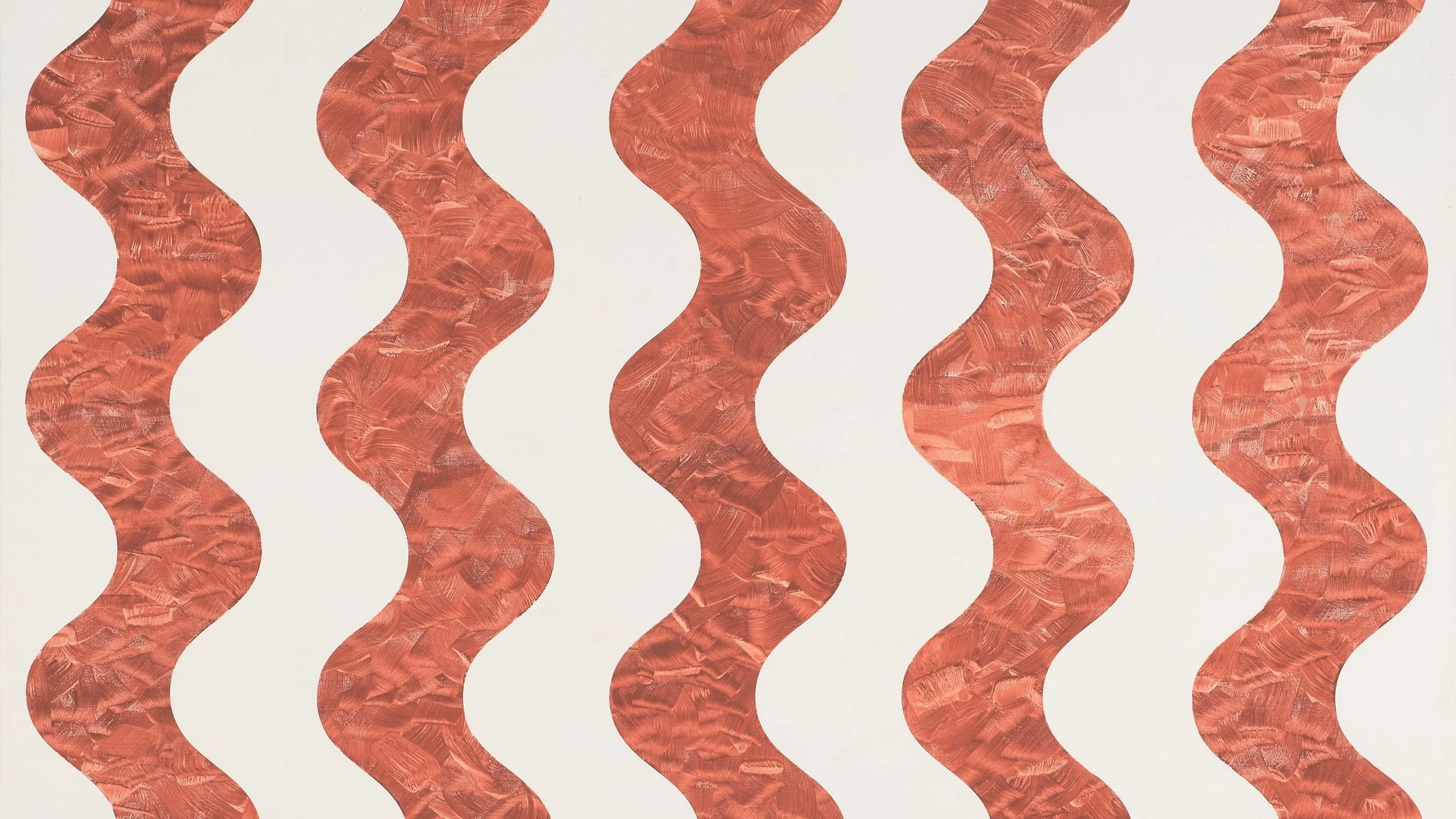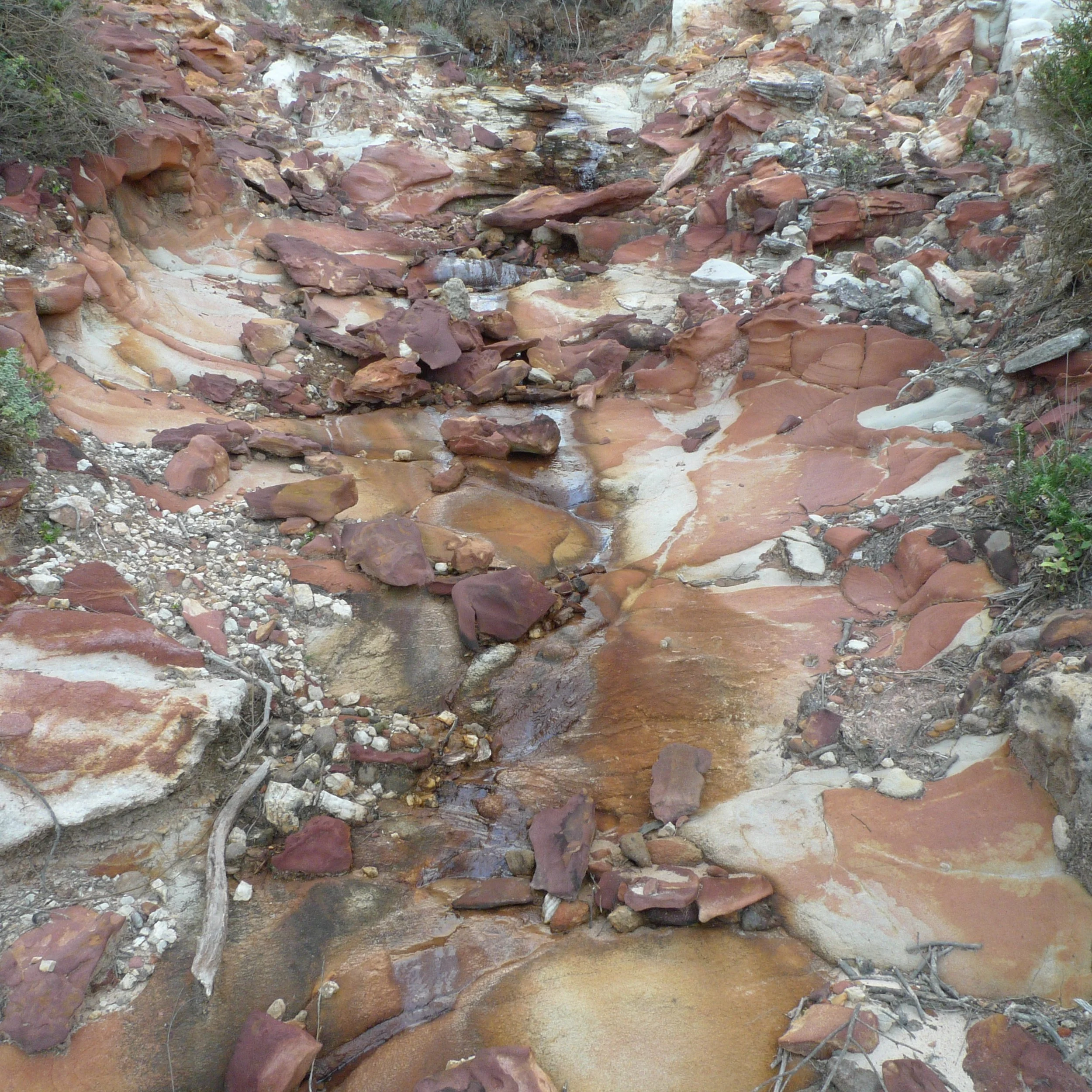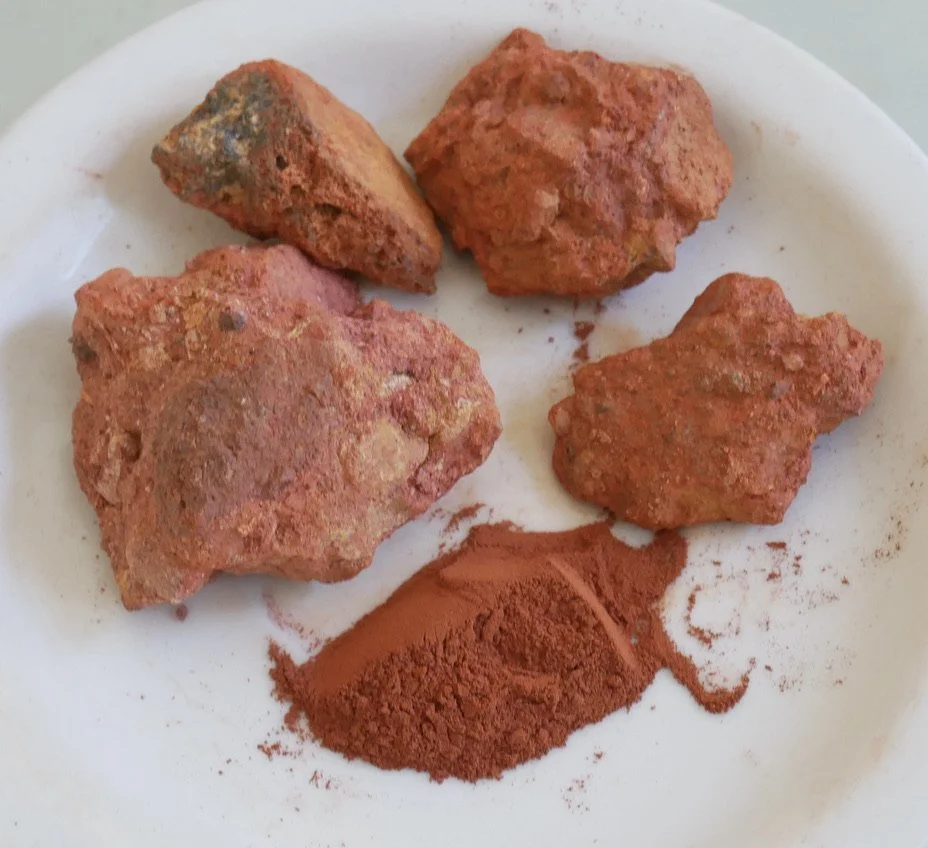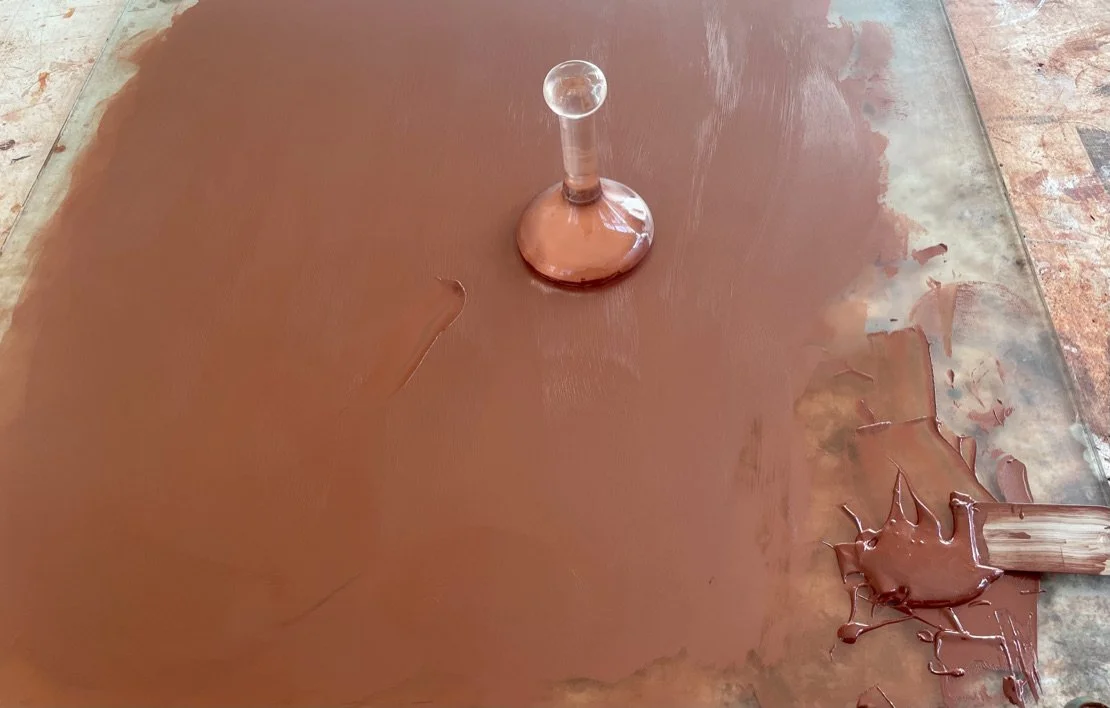Harijs Piekalns completed his Master of Visual Arts (Advanced) in painting at the School of Art and Design, College of Arts and Social Sciences at the Australian National University in 2018. He has also made photographs, holograms, sculpture and ephemeral installations.
His practice combines pre-modern painting techniques, iconography from his Latvian heritage and found ochre sourced from the Far South Coast of NSW and various other locations in Australia.
Piekalns’ geometric abstractions are derived from Latvian pre-Christian/pre-alphabet symbols or runes based on a square grid. These geometric forms represent deities such as God, Mother Earth, and Fate; the celestial stars, sun and moon; and earthly phenomenon like lightning and fire.
The stretched linen and plywood panels prepared by the artist are primed with Gesso Sottile as described by Cernino Cerninni in the mid-fourteenth century. The gesso is made with slaked Plaster of Paris.
Slaking is commenced made by mixing four cups of plaster in 12 litres of water and agitating past the setting point (15 minutes), waiting a few minutes for the plaster to settle, syphoning off the water, adding more fresh water with further agitation. The process is repeated over three days until the plaster sits cleanly at the bottom and the water is clear. The slaked plaster of Paris is then poured over a tray and when dry is combined with titanium dioxide and rabbit skin glue to make the Gesso Sottile ground which is the foundation or undercoat for the subsequent paint layers. To complete the process the gesso is coated with 10% buffered formalin.
Ochre provides the material from which the paint is made. Each ochre pigment is a tacit representation of the landscape or country from which it originates.
The pigments are tempered in either sun-bleached linseed oil with 1% beeswax or an emulsion made with egg yolk, sun bleached linseed oil, saponified beeswax and water, with a muller on a glass plate.






